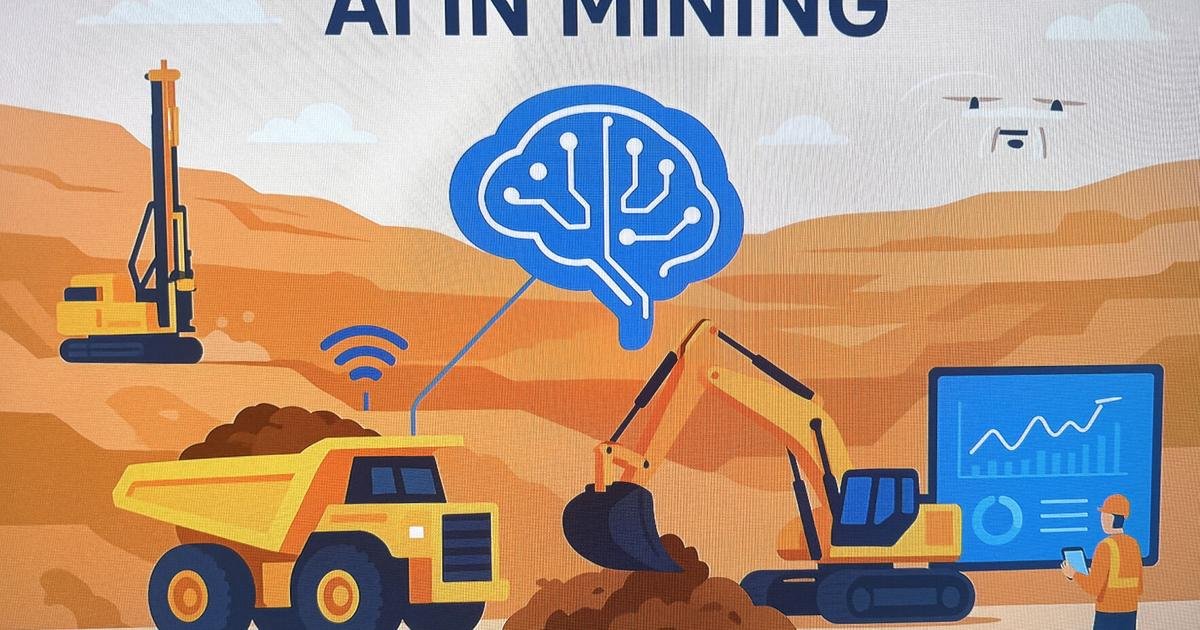The photography world is buzzing with AI talk, but let’s cut through the noise. While everyone’s debating whether AI will replace photographers, smart professionals are quietly using artificial intelligence to streamline their workflows and deliver better results to clients. These aren’t gimmicky features or experimental tools that might work someday. These are practical AI applications that are already saving photographers hours of work.
1. Effortless Subject and Sky Masking
Gone are the days of spending twenty minutes carefully tracing around a subject with the pen tool. Modern AI masking tools can identify and select complex subjects, backgrounds, and skies with remarkable accuracy in seconds.
Lightroom’s AI masking capabilities deserve special recognition for transforming the basic editing workflow in ways that many photographers are still discovering. The People, Objects, and Sky masking options use machine learning to identify subjects within your raw files, allowing for targeted adjustments without ever leaving your catalog. Portrait photographers can now isolate subjects for skin tone adjustments, eye brightening, or background darkening with a single click. The Sky selection tool has revolutionized landscape photography workflows, enabling photographers to enhance dramatic sunsets or stormy skies while keeping foreground elements perfectly protected.
What makes Lightroom’s approach particularly valuable is how these masks integrate seamlessly with existing adjustment tools, creating a more intuitive editing experience than jumping between multiple applications. The AI can distinguish between different types of subjects within the same frame, allowing for incredibly precise adjustments that would have required complex manual masking in Photoshop. You can even copy and paste adjustments across photos, with Lightroom recalculating the AI mask(s) for each respective photo.
If you haven’t tried out AI masking yet, now is a great time.
2. Advanced Noise Reduction That Preserves Detail
High-ISO photography has always been a compromise between capturing the moment and accepting image quality degradation. AI noise reduction tools have fundamentally changed this equation by learning to distinguish between actual image detail and unwanted noise patterns. Topaz DeNoise AI and DeepPRIME use machine learning algorithms trained on millions of images to understand what constitutes legitimate texture versus digital noise. These tools analyze pixel patterns at a microscopic level, making intelligent decisions about what constitutes signal versus noise based on context and surrounding image information.
The results speak for themselves when comparing before and after images. Photos shot at ISO 6400 or higher that would previously require significant compromise in print quality can now be cleaned up while preserving fine details like fabric textures, skin pores, and architectural elements. The technology has reached a point where some photographers are reconsidering their gear choices, opting for lighter telephoto lenses and relying on AI processing rather than investing in heavier, more expensive fast glass.
What sets modern AI noise reduction apart is its ability to understand context within an image. Traditional algorithms apply the same noise reduction settings across the entire frame, often resulting in overly smooth skin or lost texture in important areas. AI-powered solutions can recognize that skin should be treated differently than fabric, which should be handled differently than metal or glass surfaces. This contextual understanding allows for more aggressive noise reduction in areas where it won’t impact image quality while preserving critical details in areas where texture is essential.
3. AI-Powered Portrait Retouching for Natural Results
Portrait retouching has evolved beyond simple blemish removal to include sophisticated skin smoothing, teeth whitening, and eye enhancement that maintains a natural appearance. Tools like PortraitPro and the neural filters in Photoshop can automatically detect facial features and apply adjustments that would typically require skilled manual work. The AI understands facial anatomy well enough to enhance features while preserving the subject’s natural character, avoiding the over-processed look that plagued earlier automated retouching attempts.
Professional headshot photographers are finding particular value in these tools for high-volume sessions where consistency and speed are paramount. Instead of spending 15 minutes per image on detailed retouching, AI can handle the initial heavy lifting of skin smoothing and basic enhancement, leaving photographers to focus on creative adjustments and final polish. The technology has advanced to the point where it can handle challenging scenarios like uneven lighting or subjects wearing glasses, automatically adjusting for reflections and shadows that would complicate traditional retouching approaches.
The efficiency gains in high-volume scenarios are absolutely staggering and have fundamentally changed the economics of portrait photography. School portrait photographers processing hundreds of images per day can reduce their per-image retouching time from while maintaining consistent quality across the entire batch. Corporate headshot sessions that once required days of post-production can now be turned around in hours, allowing photographers to take on more clients and increase revenue. Event photographers shooting large groups can provide basic retouching services to every attendee rather than only premium packages, democratizing professional-quality results while maintaining healthy profit margins.
However, it’s crucial to understand where AI retouching excels and where traditional manual techniques remain absolutely superior. For high-value work like magazine covers, beauty campaigns, or premium portrait sessions where clients expect perfection, manual retouching still reigns supreme and commands premium pricing. AI tools serve as an excellent starting point, handling the time-consuming basics like initial skin smoothing and blemish removal, but skilled retouchers must still make the final creative decisions about how far to push enhancements while maintaining authenticity and avoiding the uncanny valley effect that can result from over-processing.
The sweet spot for many photographers lies in developing a sophisticated hybrid approach that maximizes efficiency while preserving quality standards. AI handles the heavy lifting for batch processing and basic corrections, while manual techniques are reserved for hero images or when clients specifically request premium retouching services. This strategy allows photographers to offer different service tiers, making professional retouching accessible to more clients while still providing ultra-premium options for those willing to pay for hand-crafted perfection. Wedding photographers, for example, might use AI for processing the 500+ reception photos while applying manual techniques to the 20-30 key ceremony and portrait images.
Modern AI retouching tools are also becoming more customizable and learning-capable, allowing photographers to train the algorithms on their preferred retouching style. This means that the AI can learn to match a photographer’s signature look, whether that’s clean and natural or more stylized and dramatic. Some tools even allow for style presets that can be applied consistently across entire sessions, ensuring brand consistency while maintaining the efficiency benefits of automated processing. The technology has reached a sophistication level where it can recognize different skin types, lighting conditions, and even cultural preferences for retouching intensity, adapting its approach accordingly.
4. Generative Fill and Intelligent Object Removal
Perhaps the most revolutionary development in recent AI tools is generative fill technology, which can seamlessly remove unwanted objects or extend image borders by creating new, contextually appropriate content. Adobe’s Generative Fill feature in Photoshop has transformed how photographers approach composition cleanup and creative extension. Instead of complex cloning and healing workflows, photographers can simply select an unwanted element and watch AI generate realistic replacement content. The technology analyzes surrounding pixels, understands spatial relationships, and creates content that matches lighting conditions, perspective, and visual style of the original image.
Real estate photographers are leveraging this technology to remove temporary distractions like construction equipment or parked cars from property shots, transforming otherwise unusable images into marketing-ready content. Travel photographers use generative fill to extend skies or remove tourist crowds from landmark images, creating cleaner compositions that would have required careful timing or multiple exposures to achieve traditionally. The technology goes beyond simple removal to include creative additions, allowing photographers to add elements that enhance composition or tell a better story. A landscape photographer might extend a sunset sky or add birds to create more dynamic imagery, all while maintaining photographic realism that would be difficult to achieve through traditional compositing methods.
The learning curve for effective generative fill usage involves understanding how to write effective prompts and select appropriate areas for modification. The technology works best when given clear, specific instructions and when working with areas that have relatively simple backgrounds or patterns. Complex architectural details or intricate textures still challenge current AI systems, but the technology improves rapidly with each update. Professional users have developed techniques for breaking complex removals into smaller, more manageable sections, achieving better results through strategic planning rather than attempting to solve everything in a single operation.
The ethical considerations around generative fill deserve serious attention from the photography community. While removing temporary distractions or technical imperfections falls within traditional standards, adding elements that weren’t present during capture enters different territory that challenges conventional notions of photographic truth. Many photographers are developing personal guidelines about what constitutes acceptable enhancement versus deceptive manipulation, particularly when working on documentary or journalistic projects where authenticity remains paramount.
5. Conceptualizing and Planning Photoshoot Ideas
Creative block is a real challenge for working photographers, especially when clients expect fresh concepts for every session. AI tools like Midjourney or DALL-E can serve as powerful brainstorming partners, generating mood boards and conceptual imagery based on simple text prompts. For example, fashion photographers can use these tools to explore color palettes, styling ideas, and set designs before committing to expensive production elements. The ability to rapidly visualize abstract concepts helps bridge the communication gap between photographer vision and client expectations, reducing the risk of expensive misunderstandings during actual production.
The process works particularly well for commercial projects where clients need to visualize concepts before approval. Instead of expensive test shoots or elaborate presentations, photographers can generate dozens of conceptual images to explore different approaches to lighting, composition, and styling within hours rather than days. The key is using AI as a starting point for human creativity rather than a replacement for original vision, treating the generated images as sophisticated mood boards rather than final artistic statements.
AI concept generation has proven especially valuable for complex commercial campaigns where multiple stakeholders need to align on creative direction before production begins. Art directors can quickly explore different visual approaches, test various styling options, and communicate concepts to clients without the time and expense of traditional concept development. The speed of iteration allows for more creative exploration and refinement before committing to final production decisions, often revealing unexpected creative directions that wouldn’t have been considered under traditional time and budget constraints.
6. Streamlining Client Communication and Marketing
Administrative tasks consume significant time for professional photographers, but AI writing tools can dramatically speed up routine communication while maintaining professionalism and personal touch. ChatGPT, Claude, and other LLMs can easily draft professional emails and create social media captions. The technology excels at maintaining consistent brand voice while adapting content for different platforms and audiences, learning from examples of previous communications to match tone and style preferences (if you show it the tone you want and/or craft prompts carefully).
Photographers running small businesses find particular value in AI-assisted content creation for social media marketing, where consistent posting is crucial for maintaining visibility but time-consuming to execute manually. Instead of spending hours crafting posts about recent sessions, AI can generate multiple caption options that capture the essence of the work while incorporating relevant hashtags and engagement strategies. Email templates for common scenarios like booking confirmations, payment reminders, and delivery notifications can be generated and customized, freeing up time for actual photography work. The efficiency gains compound quickly when managing multiple client relationships and maintaining an active online presence across several platforms simultaneously.
The sophistication of modern AI writing tools allows for highly personalized communication that feels authentic rather than automated or template-driven. Wedding photographers can input basic session details and client preferences to generate personalized thank-you notes, timeline confirmations, and preparation guides that address specific client needs and concerns. Corporate photographers managing multiple ongoing projects can maintain consistent communication with various stakeholders without sacrificing the personal touch that builds strong client relationships and encourages repeat business.
AI tools have also proven valuable for handling difficult client communications with diplomacy and professionalism. When faced with challenging situations like delivery delays, pricing discussions, or scope changes, photographers can use AI to draft diplomatic responses that address concerns while protecting business interests. The technology can suggest multiple approaches to sensitive conversations, helping photographers choose the most appropriate tone and messaging for each unique situation while maintaining professional relationships even during difficult negotiations.
7. Accurate Transcription for Client Meetings and Creative Direction
Detailed client consultations are crucial for successful photography projects, but taking comprehensive notes can distract from building rapport and understanding client needs. AI transcription services like Otter.ai, Whisper by OpenAI, or built-in features in tools like Zoom can automatically convert meeting recordings into searchable text documents. This allows photographers to focus entirely on the conversation while ensuring nothing important gets missed.
Wedding photographers benefit enormously from transcribing planning meetings where couples discuss timeline details, family dynamics, and specific shot requirements. Commercial photographers working on complex campaigns can refer back to transcribed creative briefs to ensure they’re meeting all client specifications. The technology has advanced to handle multiple speakers and industry-specific terminology with impressive accuracy.
My personal favorite is MacWhisper, an exceptional local transcription solution that processes audio files without requiring internet connectivity or cloud uploads. The privacy benefits are significant when dealing with confidential client discussions, and the accuracy rivals cloud-based solutions while maintaining complete control over sensitive information. I’ve found MacWhisper to be incredibly reliable, and its integration with the macOS ecosystem makes it feel like a natural extension of the workflow rather than an additional step.
The real power of AI transcription becomes apparent when combined with search and analysis capabilities. Photographers can quickly locate specific details from months-old client meetings by searching for keywords like “timeline,” “budget,” or specific vendor names. This searchable archive of client communications becomes invaluable for complex projects with multiple stakeholders and evolving requirements. The ability to reference exact client quotes when making creative decisions helps ensure that final deliverables align perfectly with stated preferences and expectations.
Beyond simple transcription, advanced AI tools can analyze meeting content to extract action items, identify key decisions, and even flag potential concerns or conflicts that require follow-up. This analytical capability helps photographers stay organized and proactive in their client relationships, often catching details that might otherwise slip through the cracks during busy seasons. Some tools can even generate automatic summaries of long meetings, highlighting the most important decisions and next steps for easy reference.
The integration possibilities continue to expand as transcription tools connect with project management software, calendar applications, and client relationship management systems. This seamless integration transforms scattered meeting notes into actionable business intelligence that improves service delivery and client satisfaction.
The Bottom Line
These AI applications aren’t replacing photography skills or creative vision. Instead, they’re eliminating time-consuming technical tasks that prevent photographers from focusing on what matters most: creating compelling images and building strong client relationships. The photographers who embrace these tools thoughtfully, understanding both their capabilities and limitations, will find themselves with more time for creativity and business growth while delivering consistently superior results to their clients.
The key to successful AI integration is treating these tools as sophisticated assistants rather than creative replacements. They excel at handling repetitive, technical tasks that have clear parameters and measurable outcomes. This frees photographers to concentrate on the uniquely human aspects of their craft: understanding client needs, capturing decisive moments, and creating images that resonate emotionally with viewers.











































